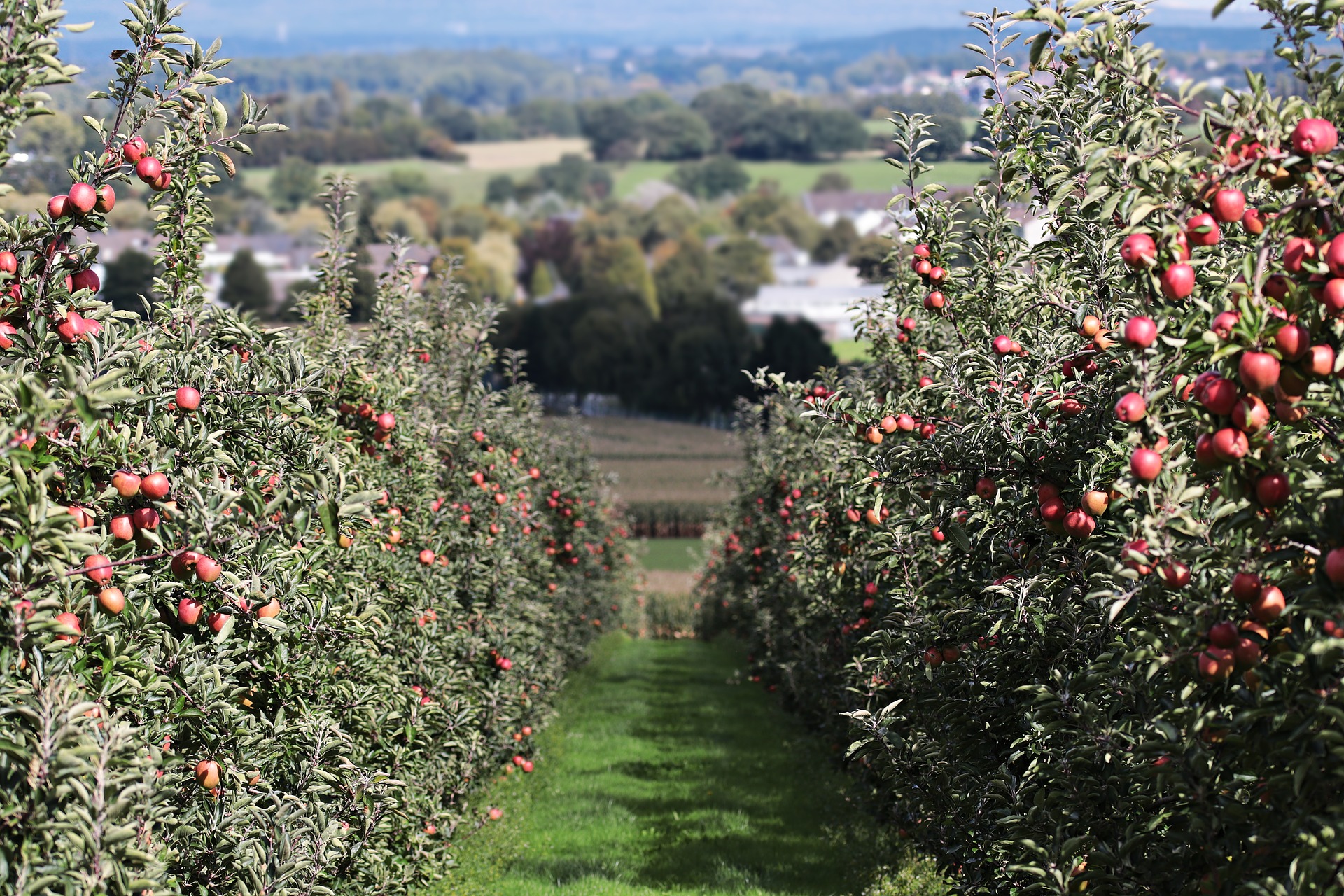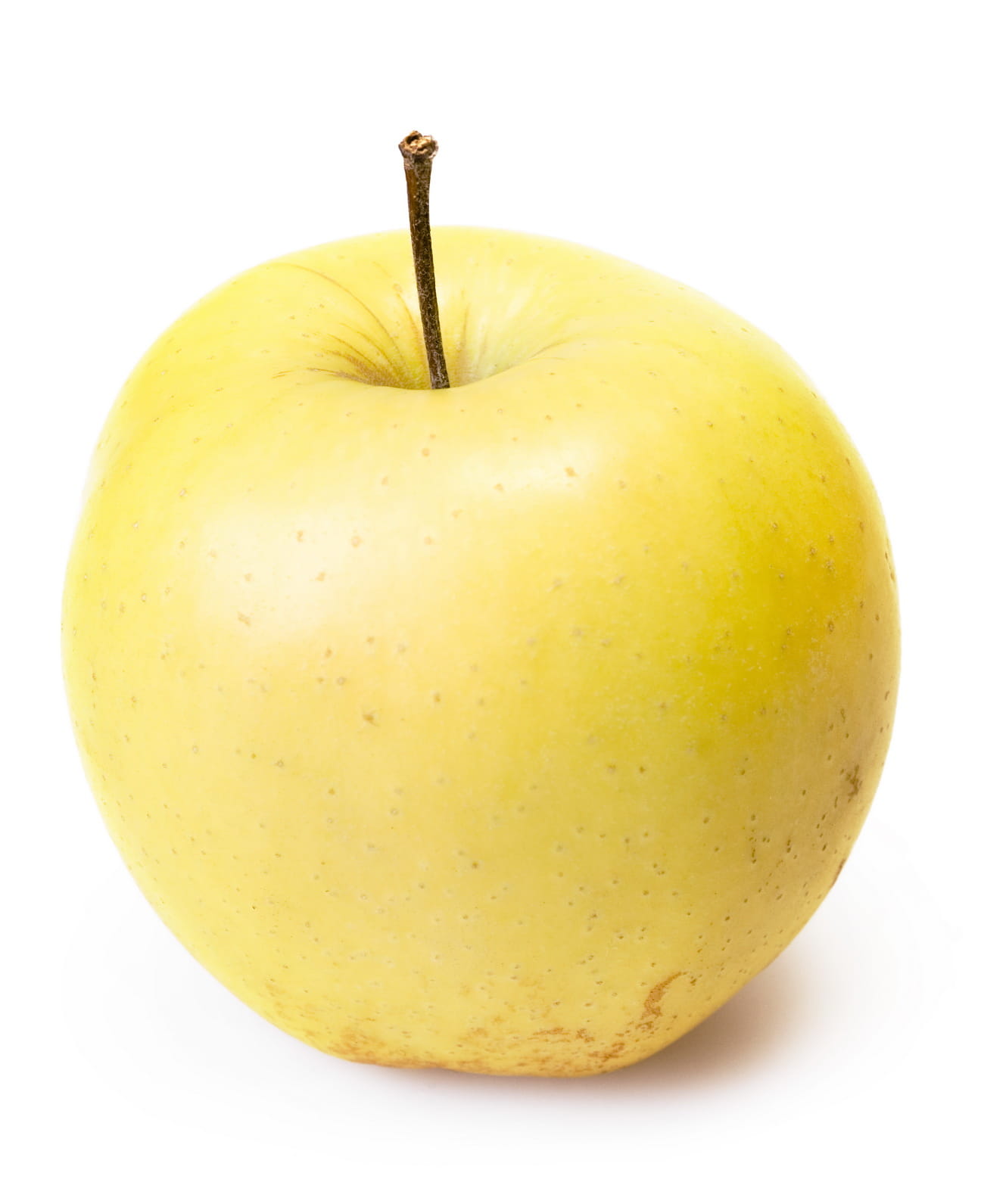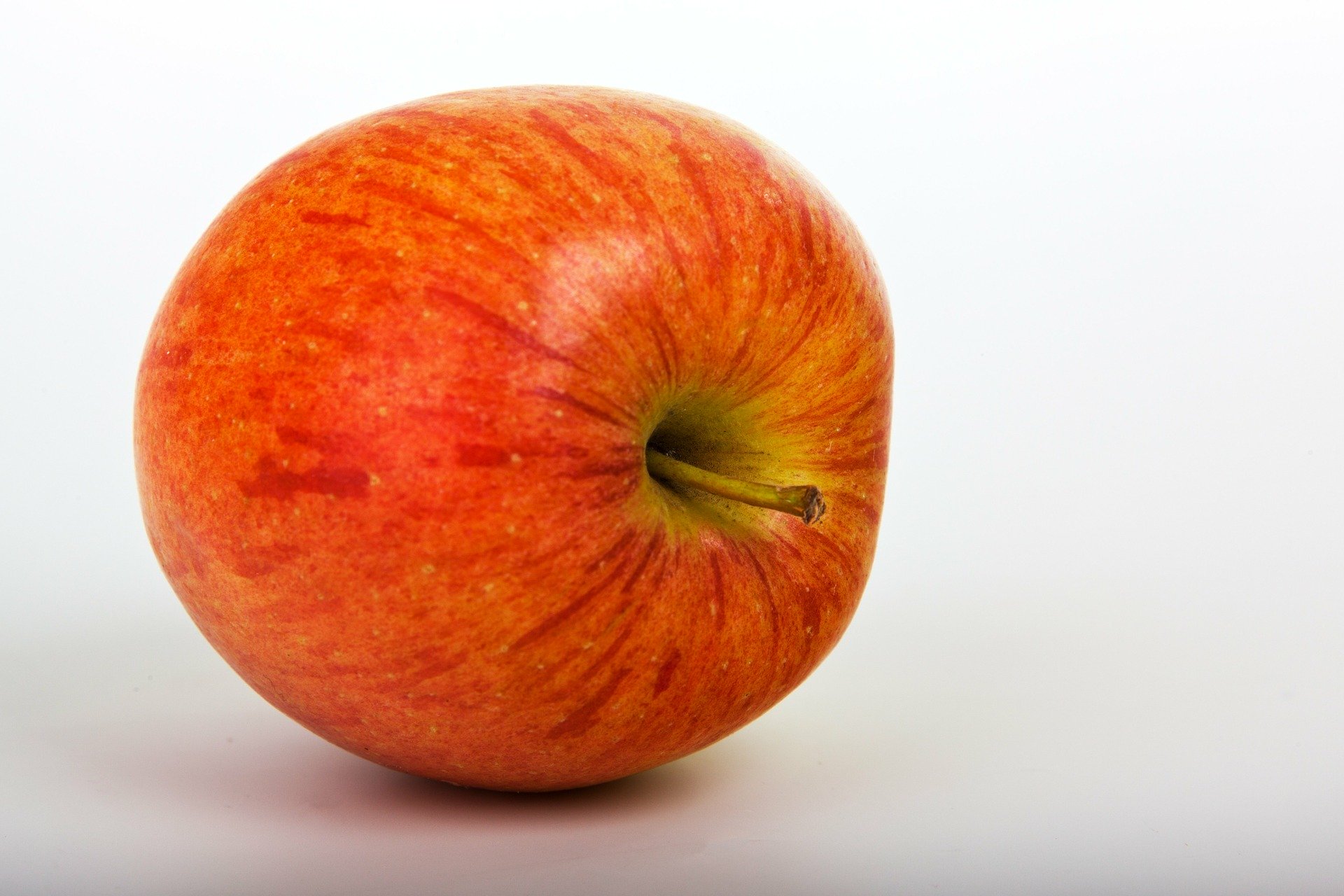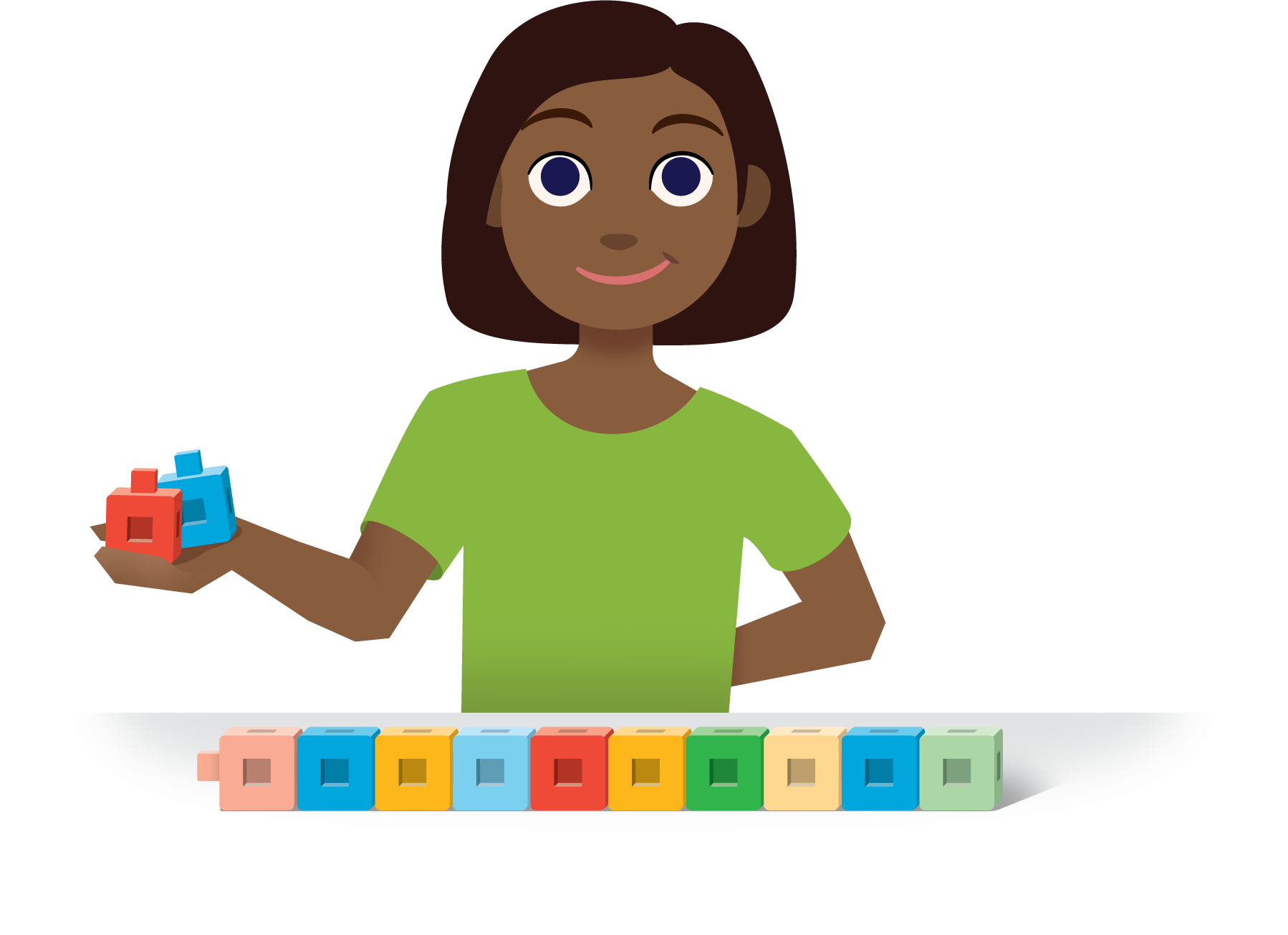Lesson 6
Red and Yellow Apples
Warm-up: Act It Out: All About Apples (10 minutes)
Narrative
The purpose of this warm-up is to allow students to connect language to mathematical representation, which will be useful when students compare a Put Together, Total Unknown story problem and a Put Together/Take Apart, Both Addends Unknown story problem in a later activity.
Required Materials
Materials to Gather
Launch
- Groups of 2
- Give students access to connecting cubes or two-color counters.
- Display and read the story.
- “What is the story about?”
- 30 seconds: quiet think time
- Share responses.
- Read the story again.
- “How can you act out this story?”
- 30 seconds: quiet think time
Activity
- “Discuss your thinking with your partner.”
- 1 minute: partner discussion
- Share responses.
- Choose a way to represent the story as a class.
- Read the story together.
- “We just acted out what happened in this story problem. Now it’s your turn to show what happened in the story problem. Show your thinking using drawings, numbers, words, or objects.”
- 3 minutes: independent work time
Student Facing
Mai was picking apples at the orchard.
Mai picked 5 yellow apples and 2 red apples.

Student Response
For access, consult one of our IM Certified Partners.
Activity Synthesis
- “In the next activity we will hear a different story about picking apples.”
Activity 1: Two Problems about Apples (10 minutes)
Narrative
The purpose of this activity is for students to compare a Put Together, Total Unknown story problem and a Put Together/Take Apart, Both Addends Unknown story problem with a similar context. This is the first time that students have worked with a Put Together/Take Apart, Both Addends Unknown story problem.
Supports accessibility for: Visual-Spatial Processing, Organization
Launch
- Groups of 2
- Read both stories.
- “What do you notice? What do you wonder?” (There are 2 stories. They are both about picking apples. There are red apples and yellow apples in both. I wonder how many red apples Lin picked.)
Activity
- Read the first story problem.
- “What do you know about Mai’s apples in this story? What do you not know?” (We know that she picked red and yellow apples. We know that she picked 5 yellow apples and 2 red apples. We do not know how many apples she picked altogether.)
- 30 seconds: quiet think time
- 1 minute: partner discussion
- Share responses.
- Read the second story problem.
- “What do you know about Lin’s apples in this story? What do you not know?” (We know that she picked 8 apples. We know that some of them were red and some of them were yellow. We don’t know how many red ones or how many yellow ones she picked.)
- 30 seconds: quiet think time
- 1 minute: partner discussion
- Share responses.
Student Facing
-
Mai was picking apples at the orchard.
Mai picked 5 yellow apples and 2 red apples.
-
Lin picked 8 apples at the orchard.
Some of the apples were yellow.
The rest of the apples were red.


Activity Synthesis
- “What is the same about these stories?” (They are both about picking apples. They both have red and yellow apples.)
- “What is different about the stories?” (The first story is about Mai and the next story is about Lin. In the first story we knew how many yellow apples and how many red apples. In the second story we know that there are 8 apples altogether.)
- “In the next activity, we will work on showing what happened in the second story.”
Activity 2: Yellow Apples and Red Apples (10 minutes)
Narrative
The purpose of this activity is for students to make sense of a questionless Put Together/Take Apart, Both Addends Unknown story problem. In this activity, students are asked to show what Lin’s apples could have looked like. The focus of this activity is for students to show the two groups of apples, rather than on answering specific questions about how many red apples and how many yellow apples Lin had. While students may notice that there is more than one possible solution to the story problem, that is not highlighted until the next lesson.
When students explain to a partner how they have represented the apples they reason abstractly and quantitatively (MP2).
Advances: Listening, Representing
Required Materials
Materials to Gather
Launch
- Groups of 2
- Give students access to connecting cubes and two-color counters.
- Read and display the task statement.
- “Tell your partner what happened in the story.”
- 30 seconds: quiet think time
- 1 minute: partner discussion
- Monitor for students who accurately retell the story. Choose at least one student to share with the class.
- “Use objects or drawings to show what Lin’s apples could look like.”
Activity
- 3 minutes: independent work time
- “Share how you showed Lin’s apples with your partner. Tell your partner how your objects or drawings show Lin’s apples.”
- 30 seconds: quiet think time
- 2 minutes: partner discussion
- Monitor for students who use two-color counters to show 8 apples, some red and some yellow. Monitor for students who show different decompositions of 8, such as 5 and 3 and 4 and 4.
Student Facing
Lin picked 8 apples at the orchard.
Some of the apples were yellow.
The rest of the apples were red.
Student Response
For access, consult one of our IM Certified Partners.
Activity Synthesis
- Invite previously selected students to share.
- As each student shares, ask:
- “How many apples did Lin pick?”
- “Where do you see the red apples that Lin picked?”
- “Where do you see the yellow apples that Lin picked?”
- “_____ used red and yellow counters to show Lin’s apples. What could I do if I wanted to draw a picture to show Lin’s apples?” (You could draw 4 red apples and 4 yellow apples. You could draw some circles. You could write r for red and y for yellow.)
Activity 3: Centers: Choice Time (25 minutes)
Narrative
The purpose of this activity is for students to choose from activities that offer practice composing, decomposing, adding, and subtracting numbers.
Students choose from any stage of previously introduced centers.
- What's Behind My Back?
- 5-frames
- Make or Break Apart Numbers
Required Materials
Materials to Gather
Required Preparation
- Gather materials from:
- What's Behind My Back, Stage 1
- 5-frames, Stages 1 and 2
- Make or Break Apart Numbers, Stage 1
Launch
- “Today we are going to choose from centers we have already learned.”
- Display the center choices in the student book.
- “Think about what you would like to do first.”
- 30 seconds: quiet think time
Activity
- Invite students to work at the center of their choice.
- 10 minutes: center work time
- “Choose what you would like to do next.”
- 10 minutes: center work time
Student Facing
Choose a center.
What’s Behind My Back?

5-frames

Make or Break Apart Numbers

Activity Synthesis
- “One of the materials we use during centers is connecting cubes. How should we use connecting cubes during centers? What’s an example of how you saw a classmate using the connecting cubes to do math?”
Lesson Synthesis
Lesson Synthesis
Display the student representations from the synthesis of the second activity.
“What is the same about all of their work?” (They all showed that Lin picked 8 apples. They all show some red apples and some yellow apples.)
Cool-down: Unit 5, Section B Checkpoint (0 minutes)
Cool-Down
For access, consult one of our IM Certified Partners.